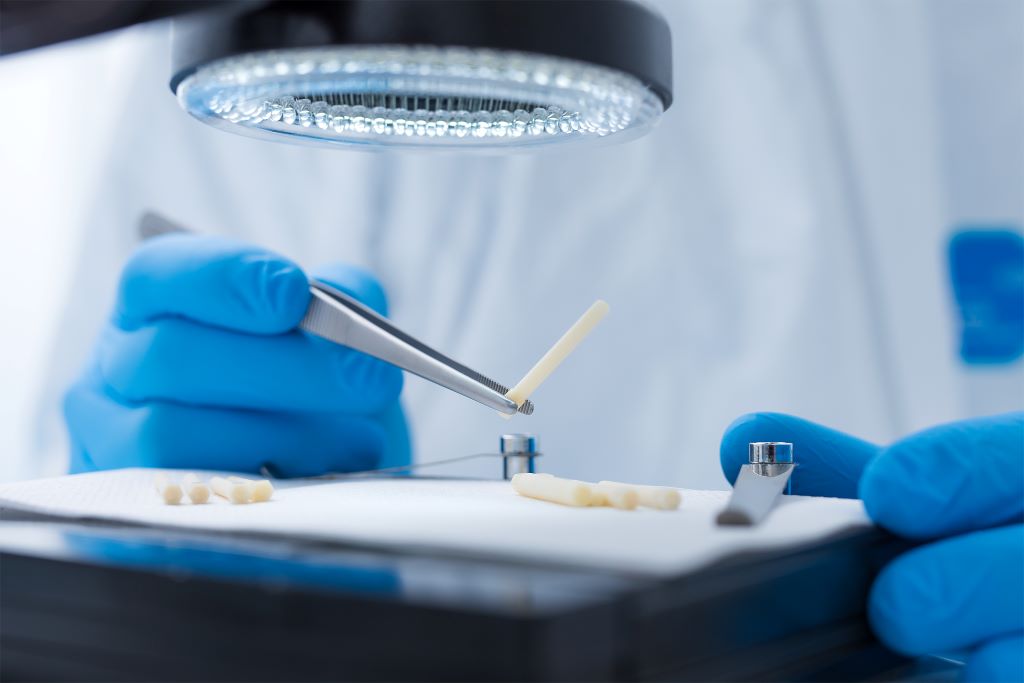Surgical screws are small pieces of metal that resemble screws and are used to secure bone fractures and implants during surgeries. In orthopedic surgeries, surgical screws play a critical role in stabilizing bones and promoting healing.
They are typically made of titanium or stainless steel and come in various sizes and lengths. Surgical screws have a threaded or cylindrical shape with a notch or a slot on the head for easy insertion and removal. The threads allow for secure fixation by gripping the bone.
These screws can be self-tapping, meaning they can create their pathway by cutting into the bone, or they may require pre-drilling. The choice of screw type and size depends on the specific surgical procedure and the patient’s individual needs.
Different Types Of Surgical Screws

Surgical screws, as detailed by https://www.heartandstylewoman.com/, are vital components in modern medical procedures, especially in orthopedic surgeries. These screws come in a variety of materials, shapes, and sizes, each tailored to address specific medical conditions and surgical requirements. Common materials used include stainless steel, titanium, and sometimes biodegradable compounds, chosen for their strength, biocompatibility, and ability to integrate with human bone. The sizes and shapes of these screws are diverse, ranging from small, delicate screws for hand or facial surgery to larger, more robust screws for spinal or hip reconstruction. A critical aspect to consider with surgical screws is what happens when a surgical screw comes loose, an event that can lead to complications and may require additional surgery to rectify. Proper screw selection and surgical technique are essential to minimize this risk, ensuring the screws provide the necessary support and stability for bone healing and structural correction.
Materials Used
Surgical screws are commonly made from biocompatible materials that are both strong and durable. Here are some of the materials used:
- Titanium: Titanium screws are lightweight yet incredibly strong, making them popular for various surgical procedures. They are also non-magnetic, which makes them suitable for patients who need to undergo MRI scans.
- Stainless Steel: Stainless steel screws are known for their strength and corrosion resistance. They are commonly used in orthopedic surgeries and can withstand high stress.
- Chromic/absorbable: Some surgical screws are made from absorbable materials, such as chromic. These screws gradually dissolve over time, eliminating the need for a second surgery to remove them.
Shapes And Sizes
Surgical screws come in various shapes and sizes, allowing surgeons to choose the most appropriate option for each patient. Here are some common shapes and sizes:
Shapes:
- Cortical Screws: These screws have a partially threaded design and are primarily used for fixing bones to plates or connecting bones.
- Cancellous Screws: Cancellous screws have a fully threaded design and are used for securing bones with less density, such as the hip and pelvis.
- Lag Screws: Lag screws have a threaded shaft and a larger head. They are used to compress fractured bones together and promote healing.
Sizes:
Surgical screws come in different sizes, typically ranging from 1.5mm to 9mm in diameter. The length of the screw can vary based on the specific surgical procedure and the patient’s anatomy.
Additionally, the design of the screw head may have variations, including hexagonal, cross-like, or hex lobular patterns, allowing for easy insertion and secure fixation.
Identifying Surgical Screws In X-rays
When it comes to surgical procedures, the use of screws is common for securing bones and implanting various medical devices. However, identifying surgical screws in X-rays is crucial for diagnosis, treatment planning, and assessing their positioning. In this article, we will explore the characteristics of surgical screws in X-rays and the techniques used to determine their placement.
Characteristics In X-rays
Identifying surgical screws in X-rays requires an understanding of their unique characteristics. These characteristics include:
- Shape: Surgical screws typically exhibit a cylindrical or threaded shape, allowing for stability and fixation.
- Material Density: Screws are made of materials with varying density, such as stainless steel or titanium. These materials appear brighter or darker on X-ray images, aiding in their identification.
- Threads: The threads of surgical screws can be visualized on X-rays, indicating their position and depth within the bone.
- Length and Diameter: The length and diameter of surgical screws can vary depending on the specific surgical technique and intended purpose. These dimensions can be measured accurately on X-rays to ensure proper fit.
Placement Techniques
Determining the placement of surgical screws in X-rays involves several techniques, including:
- Anteroposterior (AP) View: This technique involves taking X-rays from the front and back of the patient’s body. It helps assess the alignment and position of screws along the anterior-posterior axis.
- Lateral View: By capturing X-rays from the side, the lateral view allows the evaluation of screws in terms of their super inferior placement and positioning of adjacent structures.
- Oblique Views: Oblique views are obtained by positioning the patient at an angle. These views provide additional perspectives and aid in determining the orientation and trajectory of the surgical screws.
- Fluoroscopy: Fluoroscopy, a real-time X-ray imaging technique, can be utilized during surgery to confirm the proper positioning of screws before closing the incision.
By utilizing these placement techniques, healthcare professionals can ensure accurate assessment and placement of surgical screws, thus maximizing the success of the surgical procedure.
Recognizing Surgical Screws In Surgical Procedures
Recognizing surgical screws in surgical procedures is crucial for understanding the intricate nature of orthopedic surgeries. Visual appearance and application areas play a significant role in identifying these vital medical components. Let’s delve into what surgical screws look like and how they are recognized in surgical procedures.
Visual Appearance
Surgical screws are typically small, metal, threaded devices that are used to fixate bone fragments or implants together during orthopedic and spinal surgeries. They come in various shapes and sizes, including cylindrical, conical, or even specialized designs such as cortical or cancellous screws. These screws are often made from biocompatible materials such as titanium or stainless steel to ensure compatibility with the human body.
Application Areas
- Orthopedic Surgeries
- Spinal Fusion Procedures
- Trauma Surgeries
- Dental Implantology
- Maxillofacial Procedures
Common Misidentifications Of Surgical Screws
When it comes to surgical procedures, the use of surgical screws is common. However, many people may misidentify these essential components. In this section, we will explore some of the common misinterpretations surrounding surgical screws. Understanding the distinct characteristics and appearances of surgical screws is crucial for medical professionals and individuals seeking information about surgical procedures.
Similar Components
In the medical field, several components can easily be mistaken for surgical screws. It’s important to recognize these similar components to avoid any misidentification. Some of the components that may be confused with surgical screws include:
- Clamps: Clamps are often used in surgical procedures to hold tissues or blood vessels in place. These may appear similar to surgical screws due to their elongated shape and metallic appearance.
- Pins: Surgical pins are slender, needle-like devices used to hold bone fragments together. They can sometimes be confused with surgical screws as both share certain physical characteristics.
- Wires: Surgical wires are thin, flexible strands used for various medical applications. They can resemble surgical screws, particularly when used to provide stability to fractured bones.
Misinterpretations
Some individuals might mistakenly identify objects as surgical screws due to misinterpretations. Let’s take a closer look at some of these commonly misinterpreted objects:
- Nails: While nails and surgical screws may share a similar shape, they serve different purposes. Nails are primarily used in construction, whereas surgical screws are specifically designed for medical procedures.
- Prosthetic screws: In the field of prosthetics, screws are used to secure artificial limbs. These screws may resemble surgical screws, but they are designed for different purposes.
- Metal fasteners: Various metal fasteners, like bolts or anchors, may bear some resemblance to surgical screws. However, it’s important to note that they are not intended for surgical procedures and should not be used as substitutes for surgical screws.
Surgical Screw Maintenance And Removal

When it comes to surgical procedures involving screws, proper maintenance, and eventual removal are important for the well-being and health of the patient. It is essential to follow aftercare guidelines to ensure a successful recovery and minimize the risk of complications.
Aftercare Guidelines
After the surgical procedure, the patient needs to strictly adhere to the aftercare guidelines provided by the healthcare professional. Here are some important points to keep in mind:
- Keep the surgical site clean and dry to prevent infection. Avoid touching or picking at the incision area.
- Follow the prescribed medication regimen to manage pain, swelling, and any other post-surgery symptoms. Take all medications as directed.
- Attend all scheduled follow-up appointments to monitor the healing process and ensure everything is progressing as expected.
- Refrain from engaging in any strenuous activities or exercises until cleared by the healthcare professional.
- Report any unusual symptoms, such as excessive swelling, redness, or drainage, to the healthcare provider immediately.
Removal Procedures
In some cases, surgical screws may need to be removed after the bone has healed adequately. The removal procedure is typically performed under local anesthesia, and the steps involved include the following:
- The surgeon will make a small incision near the surgical site to access the screw.
- Using specialized instruments, the screw will be carefully unscrewed from the bone.
- Once the screw is removed, the incision will be closed with stitches or adhesive strips.
- Post-removal, the patient may require a period for further recovery, which may involve rest and limited mobility.
- Follow-up appointments will be scheduled to monitor the healing progress after the screw removal.
In conclusion: Proper aftercare and timely removal of surgical screws are essential for a smooth recovery and overall well-being of the patient. By following the aftercare guidelines and undergoing the removal procedure, individuals can ensure optimal outcomes and reduce the risk of complications.
Frequently Asked Questions On What Do Surgical Screws Look Like
What Are Surgical Screws Made Of?
Surgical screws are typically made of medical-grade stainless steel or titanium. These materials are chosen for their strength, durability, and compatibility with the human body. The composition of surgical screws allows them to provide stability and support in various orthopedic procedures.
How Are Surgical Screws Used In Medical Procedures?
Surgical screws are used in various medical procedures, particularly in orthopedic surgeries. They are commonly used to fix fractures, stabilize bones, or provide internal support. Surgeons carefully place the screws into the bone, and their design allows for optimal grip and stability, aiding in the healing process.
What Do Surgical Screws Look Like?
Surgical screws are typically small, metal devices with a threaded shaft and a head. The shaft is inserted into the bone, while the head is used to secure and tighten the screw in place. Different types of surgical screws exist, including screws with self-tapping capabilities or specialized designs for specific purposes.
How Long Are Surgical Screws Left In The Body?
The length of time surgical screws are left in the body depends on various factors, such as the type of procedure and the individual’s healing process. In some cases, the screws may be removed once the bone has fully healed.
However, in many cases, the screws are designed to stay in place permanently without causing any issues.
Conclusion
Understanding the appearance of surgical screws is crucial for patients and healthcare professionals. While identifying the different types and sizes of screws is essential for successful surgical procedures, exploring our top 5 tips for relieving heel pain can significantly improve daily comfort and mobility, ensuring the best possible outcomes for patients both inside and outside the operating room.





